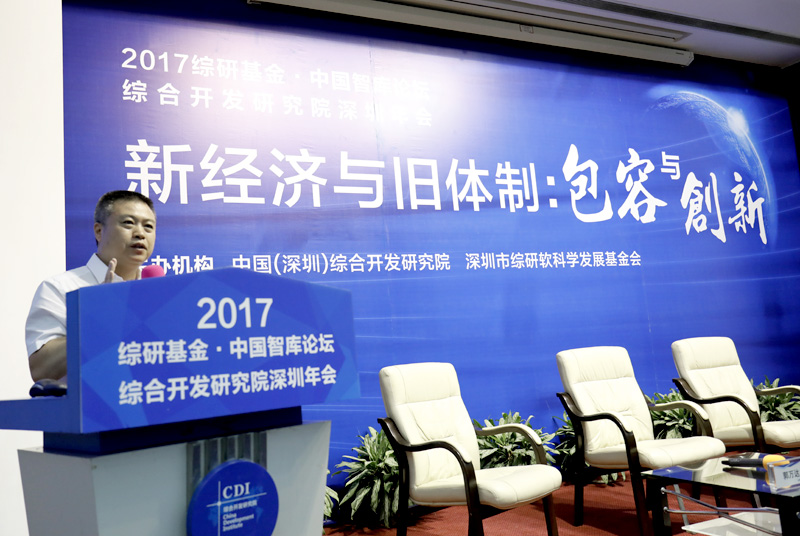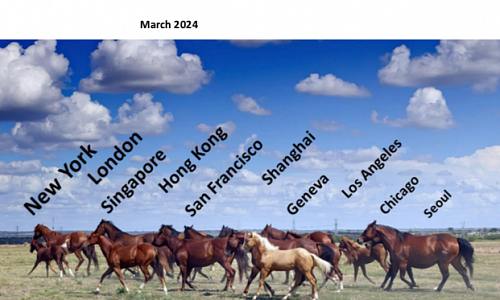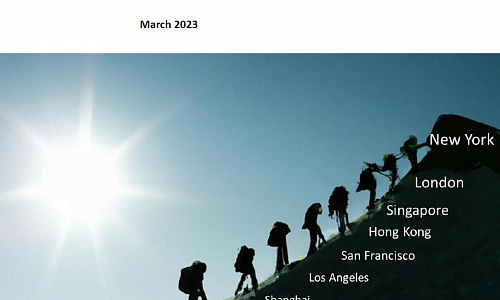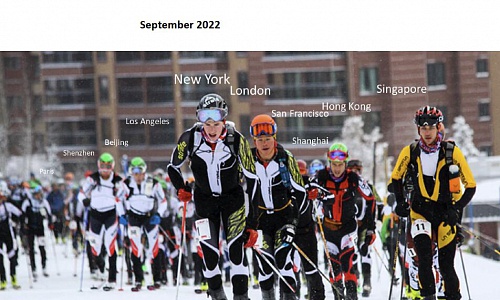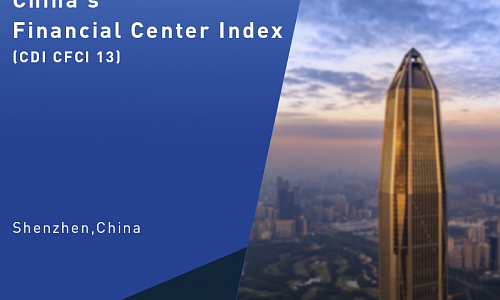CDI Signs MOUs with Belarusian Think Tanks
 During a visit led by Vice President Wu Liangcheng to Belarus from August 21 to 25, CDI signed MOUs with the Institute of Economics of the National Academy of Sciences of Belarus and Belarusian Research Institute of Transport Transtekhnika to deepen China-Belarus cooperation and synergize development policies under the “Belt and Road” Initiative.
During a visit led by Vice President Wu Liangcheng to Belarus from August 21 to 25, CDI signed MOUs with the Institute of Economics of the National Academy of Sciences of Belarus and Belarusian Research Institute of Transport Transtekhnika to deepen China-Belarus cooperation and synergize development policies under the “Belt and Road” Initiative.
CDI and the two Belarusian institutes agreed to jointly carry out research projects to facilitate policy coordination and logistics connectivity between China and Belarus under the “Belt and Road” Initiative and convene conferences or seminars to expand the influence of Belarus along the Silk Road Economic Belt.
Dr. Wu Liangchen Attends BRICS Seminar on Governance

On August 17, Dr. Wu Liangchen, Vice President of CDI, attended BRICS Seminar on Governance. Dr. Wu Liangchen’s keynote speech focused on Shenzhen Special Economic Zone’s innovation development.
According to Dr. Wu Liangcheng’s speech, the successful experience of Shenzhen Special Economic Zone is as follows: to explore system reforms and institutional arrangements in small trial areas and then to effectively distribute rare resources, which can achieve rapid growth and showcase development model for other regions.
Shenzhen Annual Meeting 2017
Information
 The annual meeting is intended to explore the way to update management procedures, regulations, optimize and deploy innovative resources efficiently with new economic engine introduced in place of the old one, as China’s economy is transitioning to a new normal. It also serves as a productive platform for Chinese enterprises and the academia to discuss how to accelerate the sound development of new economy and to seek policy proposals for the reference of policymakers.
The annual meeting is intended to explore the way to update management procedures, regulations, optimize and deploy innovative resources efficiently with new economic engine introduced in place of the old one, as China’s economy is transitioning to a new normal. It also serves as a productive platform for Chinese enterprises and the academia to discuss how to accelerate the sound development of new economy and to seek policy proposals for the reference of policymakers.
Date: August 9, 2017
Venue: International Conference Room, First Floor, CDI Mansion
Host: CDI, Shenzhen Soft Science Development Foundation (SSSDF)
Theme: New Economy and Old System-Inclusiveness and Innovation
Groundless Claim: Too Much Money Leads to Skyrocketing House Prices in First Tier Cities
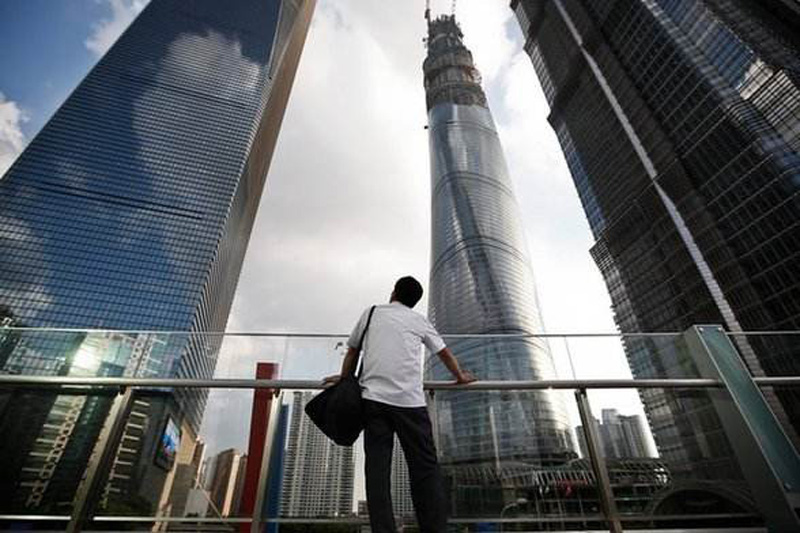 Author: Fan Gang, President, CDI
Author: Fan Gang, President, CDI
Editor’s note: Since 2015, house prices in the first-tier cities are insanely increasing while they are cooling down in second- and third-tier cities. The main reason is that the current urban development strategy is inconsistent with population migration. The government restricts the supply of land resources, thus affecting the supply in the real estate market. It has nothing to do with "too much money."
Since 2015 house prices in the first-tier cities have risen sharply, while those in the second- and third-tier cities remained stable. There are two prevailing explanations: one claims that too much money is circulated in the market, and the other claims that the land is too expensive.
First of all, money, a general equivalent, is associated with the prices of any commodities. It is illogical to conclude there is oversupply of money but that is reflected only in house prices in the first tier cities. Moreover, the monetary policy has been tight over the past two years, and M2 is growing at a rate less than 10%. Therefore, it is groundless to assert “more money” has led to polarization of house prices in the first-tier cities and second- and third-tier cities. Second, the land is priced high because the developers expect high house prices, and hence readily buy land at high prices. The price of land naturally increases with the economic development. Actually the abnormal rise of land prices is mainly attributed to the wrong urban development strategy, which results in the inappropriate allocation of land. As a result, land is in short supply in the first tier cities, and there is a huge gap between housing demand and supply.
At present, China’s house price problem is a result of inappropriate urban development strategy. Therefore, it is necessary to liberalize the supply of land to solve problem. In the long run, the most crucial thing is to correct the planning for urban development, focusing on the development of metropolises. What’s more, the improvement and establishment of the property tax and lease system also has an important impact on the property market. In the short run, the purchase restriction is an important measure to effectively protect the real estate market from the real estate speculation.
Two Competitors to Survive in Bike Sharing Capital Battles
 Author: Cao Zhongxiong, Executive Director, New Economy Research Department
Author: Cao Zhongxiong, Executive Director, New Economy Research Department
Editor’s note: Despite fierce industrial competition, various funds are still scrambling to occupy the sharing bike market, indicating the industry still has considerable potential for development. But in the future, the platforms will inevitably face reshuffle. Mobike and ofo might be left as the final two major competitors.
As capitals swarm into the sharing bike market, an ideal gateway to the Internet economy, the industry still has plenty of room for development. But there is no doubt that competition will be more and more intense.
Every bike sharing platform is implanted with more business models in an attempt to boost industry value; however, this move is unlikely to achieve great success. Sharing bike is a transport tool by nature, and it is unrealistic to let it stack more commercial values.
At the same time, sharing bikes are increasingly closely related to the Internet of Things. For example, Mobike and ofo are working to expand the application of Internet of Things technology. In fact, sharing bike itself is the Internet of Things. But it can only be a terminal. If new Internet of Things technologies are implanted in the future, more emphasis will be put on user experience.
With the entry of various capitals, competition of sharing bike platform is becoming more and more intense. Among them, ofo and Mobike are most favored by capital, topping the industry in market share and development scale. To some extent, the market capacity of sharing bikes is close to saturation in the first-tier cities. The number of bikes put to the market by various platforms has actually exceeded market demand. There is little chance for the emergence of new platforms. In the second- and third-tier cities on the Chinese mainland, the market space for sharing bikes will not be too large. In the process of fierce competition, there will be great possibility for merger and acquisitions. Small businesses will be phased out, and the final game will be held between Mobike and ofo.
Dr. Wang Guowen Attends the 1st “Belt & Road” International Business Forum
 On July 31, Dr. Wang Guowen, Director of Department of Logistics and SCM attended the 1st ‘Belt & Road’ International Business Forum. Dr. Wang Guowen gave a keynote speech themed on the construction of “Belt and Road” Initiative and cooperation with Western Australia.
On July 31, Dr. Wang Guowen, Director of Department of Logistics and SCM attended the 1st ‘Belt & Road’ International Business Forum. Dr. Wang Guowen gave a keynote speech themed on the construction of “Belt and Road” Initiative and cooperation with Western Australia.
The proposal of three blue economic passages will bring chance for upcoming prosperity of maritime trade between China and countries along the “Belt and Road”. What’s more, Perth, the capital of Western Australia, is expected to become a hub node of blue economic zone, which includes China, Australia, New Zealand and Pacific Island countries. Perth can serve as a base and transit center, which take full advantage of the development opportunities brought by blue economy, so as to introduce new industries and realize the transformation and upgrading of traditional industries.
Hong Kong's Positioning in Belt and Road Initiative
 Author: Guo Wanda, Executive Vice President, CDI
Author: Guo Wanda, Executive Vice President, CDI
Editor’s Note: The Belt and Road Initiative has marched from a concept to the phase of accelerated implementation. The key of Belt and Road construction is policy coordination, facilities connectivity, unimpeded trade, financial integration, and people-to-people bond. It is a major international project involving land, technology, funds, talents, information and many other factors. Hong Kong has unique economic, social and cultural functions, which enable to promote the joint consultation, construction and shared benefits under the Belt and Road Initiative.
Hong Kong is an international metropolis, gathering international high-end resources. It stands extremely high in the level of opening-up, enjoying rich experiences in cultural and people-to-people exchanges. It hence can play an important role not only in the Belt and Road construction, but also in the global economic and social exchanges.
Hong Kong's internationally advanced professional services cover the financial, legal, operational risk assessment, human resources, and international arbitration and mediation sectors. It boasts better understanding of the development strategy of governments as well as the rules of the market system. Therefore, it can play a professional intermediary function to realize the connectivity of development strategies, and play an important role in policy coordination between the Chinese government and the countries along the routes.
Hong Kong, with leading international certification monitoring technology and standards in the field of infrastructure construction, can help Chinese mainland enterprises to establish authoritative standards in this field, and promote it widely in the Belt and Road countries. The implementation of the "China standard" as an international standard is a crucial step in the internationalization of Chinese technologies and facilitating Chinese enterprises to "go global". In infrastructure construction projects in Belt and Road countries, we may adopt the mainland and Hong Kong “1+1"package service cooperation model, to assist mainland enterprises in achieving communication and coordination with those in the host countries.
Hong Kong can take advantage of its position as an international trade center and international shipping hub to support and serve the Belt and Road construction with developed international trade network and efficient international high-end logistics service. In addition, Hong Kong itself is the world's leading free trade port, separate customs territory, with perfect free market legal system. If China is to promote the construction of a free trade zone network or sign RCEP, Hong Kong can give play to its advantages in software, hardware and geographical position, paving the way for unimpeded trade along Belt and Road routes.
Hong Kong is the world's fourth largest foreign exchange market, the eighth largest securities market and an offshore centre for the RMB. It plays an important role in promoting the use of RMB in Belt and Road countries and the internationalization of RMB. Enterprises can be listed in Hong Kong, issue a variety of bonds, including RMB, for financial integration. Investment institutions can jointly set up funds for the development of the Belt and Road, as a supplement to the Silk Road Fund, to provide convenience for the Belt and Road financial integration.
The Belt and Road is not only economic and trade cooperation, but also cultural exchanges and communication. Hong Kong is one of the cities with the highest degree of globalization. It is well developed in information service, and the media is in line with international standards. Its humanistic exchanges and cultural interaction are diversified, inclusive and global. Therefore, Hong Kong has gradually become an important window for the world to learn about the Chinese mainland, Chinese culture and the Chinese nation.
Rethinking China’s Urbanization and Metropolis
 The book proposes to comply with the law of population migration and urbanization, release the limitation on metropolis development, accelerate the pace of urbanization and enhance economic impact of metropolis on surrounding towns and rural areas.
The book proposes to comply with the law of population migration and urbanization, release the limitation on metropolis development, accelerate the pace of urbanization and enhance economic impact of metropolis on surrounding towns and rural areas.
Overseas Direct Investment: Strategy, Mechanism and Challenges
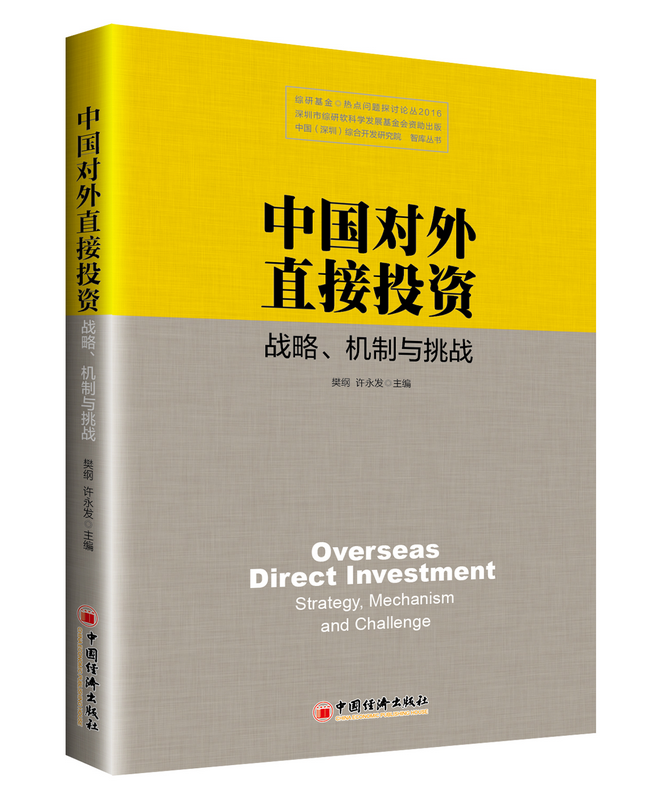 The book comprises three parts, namely to construct an open economy, risks and challenge of overseas direct investment, and opportunities and strategies for going-out enterprises so as to facilitate the 13th Five-Year Plan and China’s long-term economic development.
The book comprises three parts, namely to construct an open economy, risks and challenge of overseas direct investment, and opportunities and strategies for going-out enterprises so as to facilitate the 13th Five-Year Plan and China’s long-term economic development.
Dr. Qu Jian Attends the Sri Lanka Economic Summit 2017
 From July 25 to 26, Dr. Qu Jian, Vice President of CDI, attended the Sri Lanka Economic Summit 2017 held by Ceylon Chamber of Commerce in Colombo. Themed on Execute-Transform-Realize, the summit discussed how to achieve the economic transformation in Sri Lanka through transforming the policy implementation model, accelerating the reform and renewing the business mode. Dr. Qu Jian gave a keynote speech on the session of Realizing the Potential of Mega Development Projects.
From July 25 to 26, Dr. Qu Jian, Vice President of CDI, attended the Sri Lanka Economic Summit 2017 held by Ceylon Chamber of Commerce in Colombo. Themed on Execute-Transform-Realize, the summit discussed how to achieve the economic transformation in Sri Lanka through transforming the policy implementation model, accelerating the reform and renewing the business mode. Dr. Qu Jian gave a keynote speech on the session of Realizing the Potential of Mega Development Projects.
Dr. Qu Jian shared the developing mode and successful experience of Chinese Special Economic Zones. Besides, he put emphasis on the planning phase before the industrial park construction, and further illustrated the preliminary planning process including the establishment of Special Economic Zones Law, the planning of industries and space, and the research of investment feasibility, financing, and operation management.

